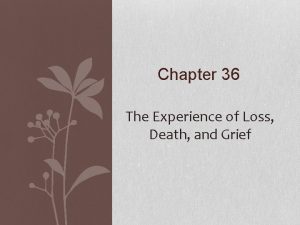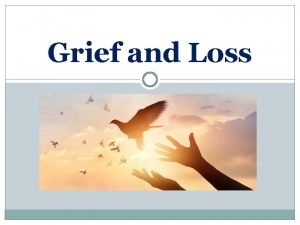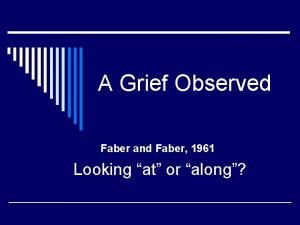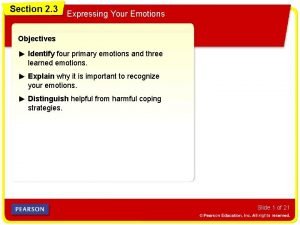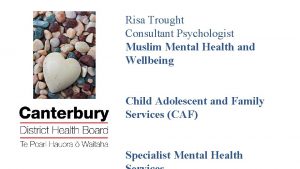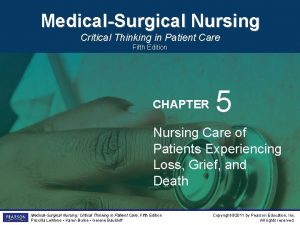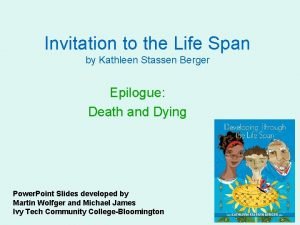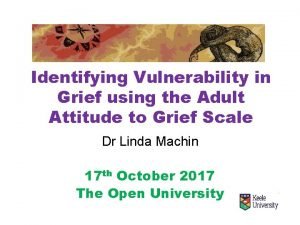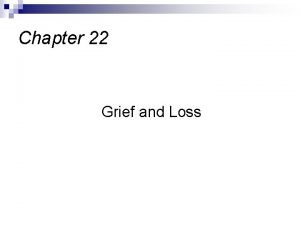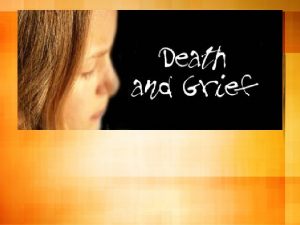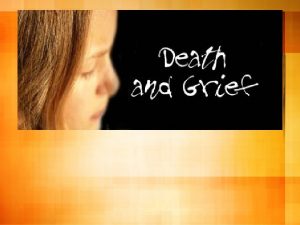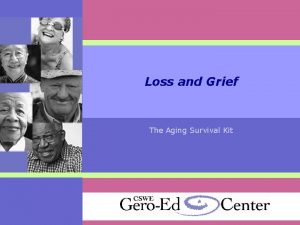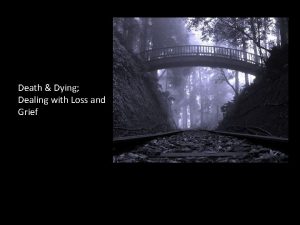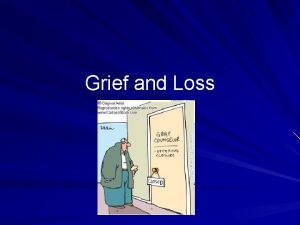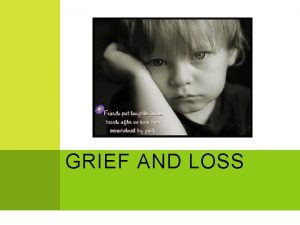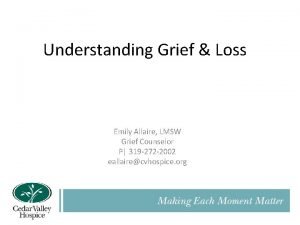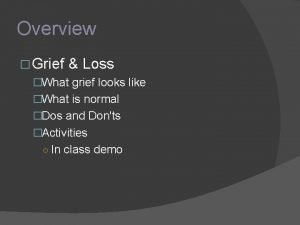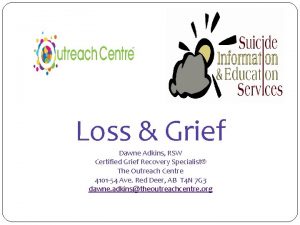Grief and Loss Chapter 22 Loss is the












- Slides: 12

Grief and Loss Chapter 22

• Loss is the experience of separation from something of personal importance. • Loss is anything that is perceived as such by the individual. • Examples of loss include: – – – A significant other (person or pet) Illness or debilitating conditions Developmental/maturational changes Decrease in self-esteem Personal possessions

Theoretical Perspectives – Elisabeth Kübler-Ross • Stage I: Denial • Stage II: Anger • Stage III: Bargaining • Stage IV: Depression • Stage V: Acceptance – John Bowlby • Stage I: Numbness or protest • Stage II: Disequilibrium • Stage III: Disorganization and despair • Stage IV: Reorganization

– J. William Worden • Task I. Accepting the reality of the loss • Task II. Working through the pain of grief • Task III. Adjusting to an environment that has changed because of the loss • Task IV. Emotionally relocating what has been lost and moving on with life

• Acute grief – Usually lasts 6 to 8 weeks • The grief process – Is very individual --May last for many years • The grief response is more difficult if: – – – The bereaved person was strongly dependent The relationship was an ambivalent one The individual has experienced a number of recent losses The loss is that of a young person The bereaved person’s health is unstable The bereaved person perceives some responsibility for the loss

• The grief response may be facilitated if: – The individual has the support of significant others – The individual has the opportunity to prepare for the loss

• Delayed or inhibited grief – The absence of grief when it ordinarily would be expected – Potentially pathological because the person is not dealing with the reality of the loss – Remains fixed in the denial stage of the grief process – Grief may be triggered much later in response to subsequent loss – All the symptoms associated with normal grieving are exaggerated. – The individual becomes incapable of managing activities of daily living. – The individual remains fixed in the anger stage of the grief process. – Depressed mood disorder is a type of distorted grief response.

• Chronic or prolonged grieving – A prolonged grief process may be considered maladaptive when certain behaviors are exhibited • Behaviors aimed at keeping the lost loved one alive • Behaviors that prevent the bereaved from adaptively performing activities of daily living

• One crucial difference between normal and maladaptive grieving – The loss of self-esteem does not occur in uncomplicated bereavement – The loss of self- ultimately precipitates depression

Assessment • Children • Adolescents • Elderly adults

Nursing Diagnosis

Hospice Palliative Care • Palliative Care is management approach for endof-life issues that prevents, relieves, reduces, and/or ease the symptoms of the disease without compromising medical interventions. • Hospice Care is a comprehensive care delivery system for the terminally ill.
 Chapter 4 lesson 3 coping with loss and grief
Chapter 4 lesson 3 coping with loss and grief Chapter 36 loss and grief
Chapter 36 loss and grief Stages of grief and loss
Stages of grief and loss Personal response
Personal response A grief observed chapter 1
A grief observed chapter 1 Normal loss treatment in process costing
Normal loss treatment in process costing The three learned emotions are grief shame and
The three learned emotions are grief shame and Children grief
Children grief Engels model of grief
Engels model of grief Absent grief
Absent grief Grief scale for adults
Grief scale for adults Chin raiser
Chin raiser Grief is like an earthquake
Grief is like an earthquake

